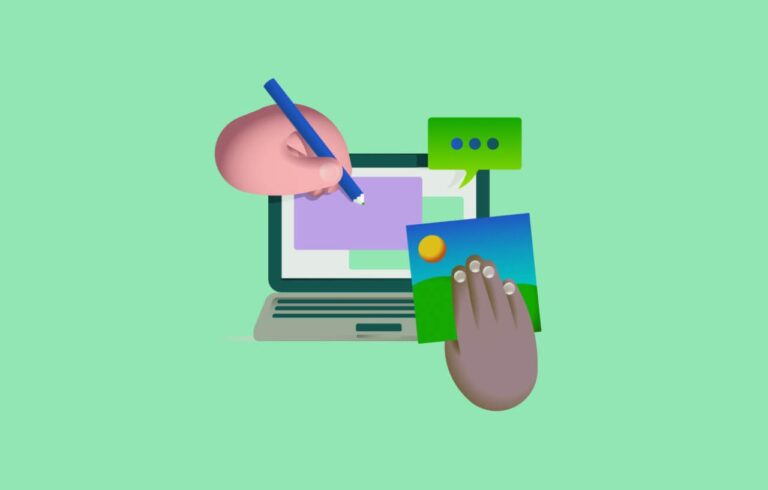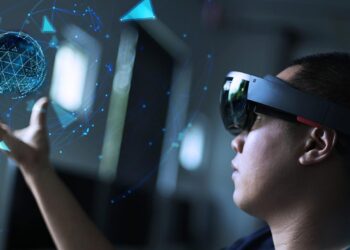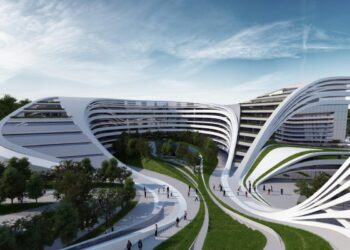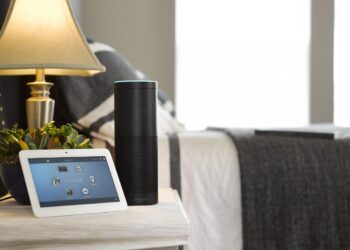The world of graphic design is a vibrant, ever-shifting landscape, constantly evolving to reflect technological advancements, cultural currents, and changing human preferences. Far from being static, it’s a dynamic field where trends emerge, fade, and often resurface with a fresh interpretation, influencing everything from advertising and branding to web interfaces and editorial layouts. This in-depth exploration will dissect the driving forces behind current graphic design trends, predict future trajectories, and explain how these visual shifts impact businesses, consumers, and the broader creative industry. Understanding these trends isn’t just about aesthetics; it’s about effective communication, strategic positioning, and connecting with audiences in an increasingly visual world.
Historically, graphic design has always been a mirror of its time. From the Art Nouveau elegance of the late 19th century to the minimalist precision of Swiss Style in the mid-20th, each era has left its unique visual signature. Today, the pace of change is unprecedented, driven by the rapid evolution of digital platforms, the rise of artificial intelligence, and a global consciousness demanding more authentic and sustainable visual narratives. Graphic designers are no longer just visual artists; they are communicators, strategists, and problem-solvers, crafting experiences that resonate deeply with viewers and drive action. Navigating this complex visual ecosystem requires a keen eye for emerging patterns and a nuanced understanding of their underlying cultural and technological drivers.
The Driving Forces Behind Graphic Design Trends
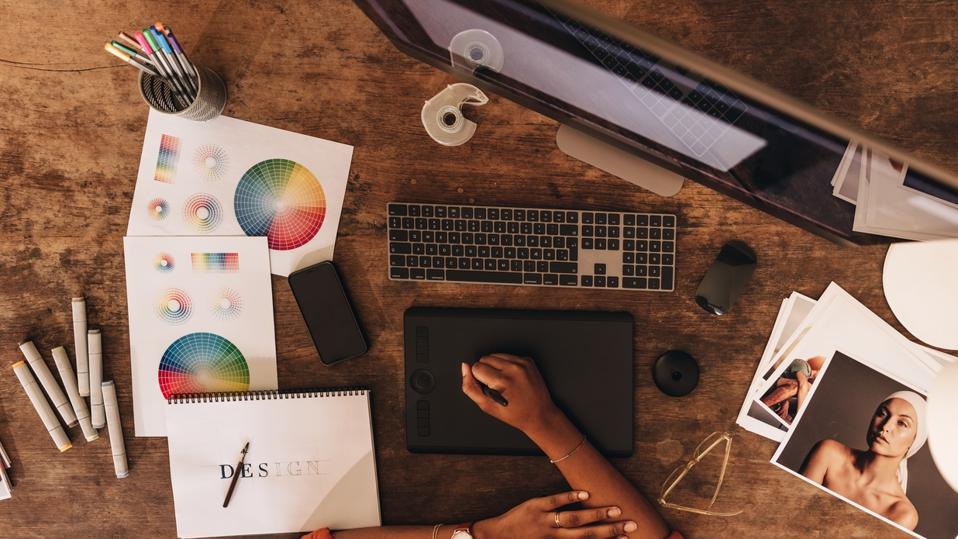
Several powerful forces continuously shape the direction of graphic design, pushing creative boundaries and redefining visual language.
A. Technological Advancements:
* Software and Tools: The continuous evolution of design software (e.g., Adobe Creative Suite, Figma, Blender) and the emergence of new tools (AI art generators, 3D rendering engines) empower designers to create more complex, dynamic, and interactive visuals.
* Display Technologies: Improvements in screen resolution, color fidelity (e.g., HDR displays), and the proliferation of diverse screen sizes (smartphones, tablets, large interactive displays) demand adaptable and high-quality visual assets.
* Web Standards and Interactivity: The evolution of web technologies (CSS, JavaScript, WebGL) allows for more sophisticated animations, interactive elements, and immersive user experiences directly within browsers, influencing UI/UX design.
* Augmented and Virtual Reality (AR/VR): The growing adoption of AR/VR opens up new frontiers for immersive graphic design, requiring the creation of 3D assets, spatial interfaces, and interactive overlays.
B. Cultural and Societal Shifts:
* Social Media Influence: The pervasive nature of platforms like Instagram, TikTok, and Pinterest has created a highly visual culture, where trends spread rapidly and demand for engaging, shareable content is constant. This fosters a cyclical trend of bold, attention-grabbing visuals.
* Global Connectivity: The interconnectedness of cultures means that design influences can flow freely across borders, leading to a fusion of styles and a demand for globally relevant yet culturally sensitive designs.
* Authenticity and Transparency: Consumers increasingly seek genuine connections with brands. This drives a trend towards more authentic, less polished, and often hand-crafted aesthetics that feel relatable and trustworthy.
* Nostalgia Cycles: As with fashion, graphic design often experiences cyclical returns to past aesthetics (e.g., Y2K, 80s retro-futurism). These revivals are filtered through a modern lens, offering a comforting familiarity.
C. Environmental and Ethical Concerns:
* Sustainability: A growing global awareness of environmental issues influences design choices, leading to trends like eco-friendly packaging, earthy color palettes, and visuals that promote natural themes. Designers explore sustainable materials and less resource-intensive digital practices.
* Inclusivity and Diversity: There’s a strong push for designs that are inclusive of all genders, ethnicities, body types, and abilities. This impacts everything from representation in imagery to accessible font choices and color contrasts.
* Ethical AI: As AI plays a larger role in content generation, discussions around ethical AI, bias in algorithms, and intellectual property are emerging, shaping how designers interact with these tools.
D. Economic and Business Landscape:
* Brand Storytelling: In a crowded market, brands increasingly rely on compelling visual narratives to differentiate themselves and connect emotionally with consumers. Graphic design is central to this storytelling.
* E-commerce Growth: The rise of online shopping necessitates strong visual branding, intuitive user interfaces, and engaging product photography and presentation to drive sales.
* Personalization: The demand for personalized experiences extends to design, with brands seeking ways to offer customized visual content and adaptive interfaces.
Prominent Graphic Design Trends
While trends are fluid, several dominant themes are shaping the visual landscape right now and are expected to continue their influence.
A. Maximalism and Anti-Minimalism:
* Beyond “Less is More”: As a counterpoint to decades of minimalism, maximalism embraces abundance, complexity, and bold visual statements. It features rich textures, intricate patterns, vibrant colors, and layered elements.
* Playful Chaos: This trend often appears chaotic at first glance, but it’s a curated chaos that feels energetic and expressive. It allows for more personality and rebellion against uniformity.
* Controlled Overload: While maximalist, good designs still maintain a sense of balance, preventing the visual from becoming overwhelming or illegible. It’s about strategic layering rather than arbitrary clutter.
B. AI-Generated and AI-Assisted Art:
* Emergence of Generative AI: Tools like Midjourney, DALL-E, and Stable Diffusion are enabling designers to generate complex images, textures, and even entire visual concepts from text prompts.
* Creative Augmentation: AI is not replacing designers but acting as a powerful assistant, accelerating ideation, creating variations, and handling repetitive tasks, freeing up designers for more strategic work.
* Ethical Considerations: This trend sparks ongoing discussions about copyright, authenticity, and the future role of human creativity. Designers are exploring how to ethically integrate AI while maintaining their unique voice.
C. Nostalgic Revivals (Refreshed):
* Y2K Aesthetic: A resurgence of late 90s/early 2000s visuals, characterized by bubblegum colors, metallic textures, chunky typography, futuristic motifs, and low-res digital aesthetics.
* Retro Futurism (80s/90s): Inspired by sci-fi visions from previous decades, incorporating neon glows, chrome effects, grid patterns, vaporwave aesthetics, and stylized gradients.
* Vintage Typefaces and Layouts: A renewed appreciation for classic typography, often paired with modern elements to create a unique blend of old and new.
D. 3D and Hyper-Realism:
* Immersive Visuals: Advancements in 3D rendering software make it easier to create highly realistic and often surreal 3D elements, textures, and characters for web, print, and branding.
* Soft Body and Fluid Dynamics: A trend within 3D where objects appear squishy, malleable, or liquid-like, adding a playful and tactile quality.
* Integration with 2D: Often, 3D elements are seamlessly integrated into 2D layouts, creating depth and visual interest without overwhelming the design.
E. Bold Typography and Expressive Lettering:
* Statement Fonts: Typography is increasingly becoming the central visual element, with designers using oversized, highly customized, or uniquely expressive fonts to grab attention.
* Kinetic Typography: Animated text that moves and transforms, adding a dynamic layer to web design, video, and digital advertisements.
* Variable Fonts: Fonts that allow for continuous variation along multiple axes (weight, width, slant), offering immense flexibility and customization, leading to more unique type treatments.
* Hand-Drawn and Organic Lettering: A continued appreciation for personalized, imperfect, and hand-crafted lettering styles that convey authenticity and warmth.
The Impact of Trends on Business and Consumers
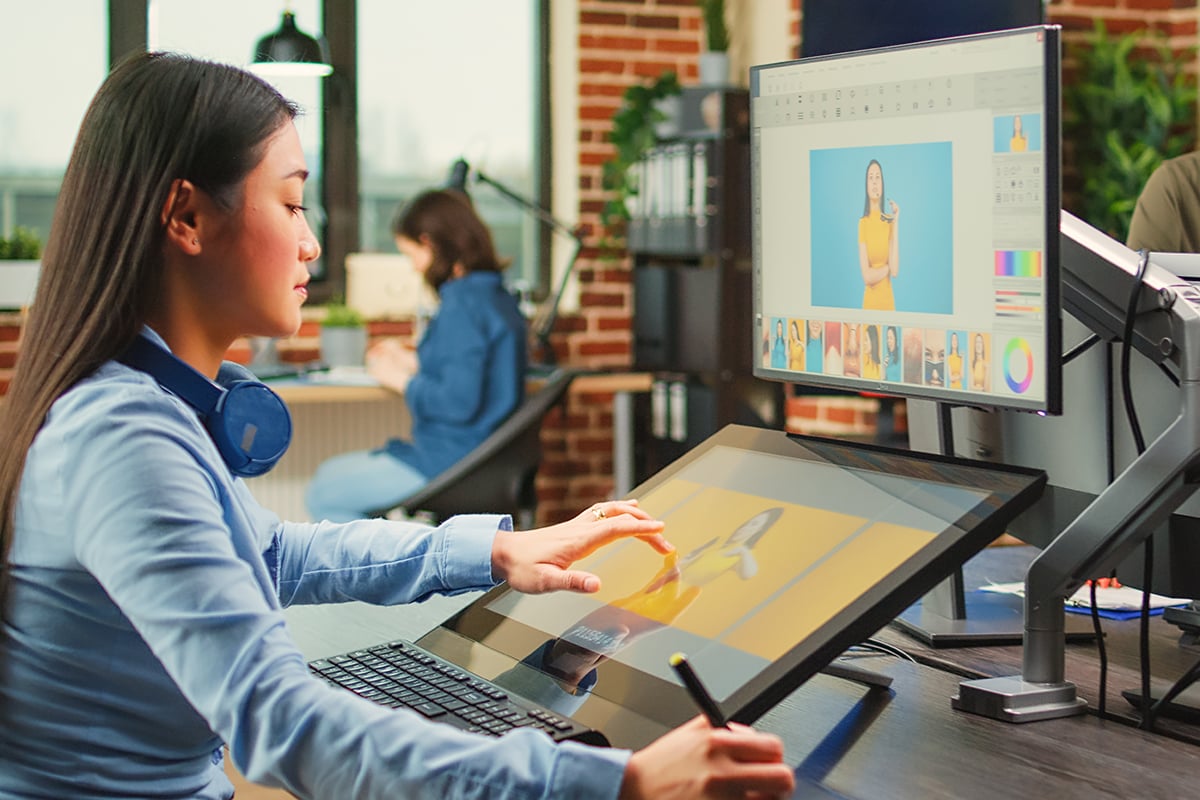
Graphic design trends have tangible effects on how businesses operate and how consumers interact with brands.
A. Brand Identity and Recognition:
* Staying Relevant: Brands that align with current design trends often appear modern, forward-thinking, and relevant to their target audience.
* Differentiation: Strategic use of trends can help a brand stand out in a crowded market, while thoughtless adoption can lead to a generic look.
* Communicating Values: Design choices (e.g., eco-friendly aesthetics, inclusive imagery) can visually communicate a brand’s values and mission to consumers.
B. User Experience (UX) and User Interface (UI):
* Intuitive Navigation: Trends in UI design often focus on improving usability, making digital interfaces more intuitive and user-friendly.
* Visual Engagement: Engaging visual trends (e.g., micro-interactions, compelling animations) can make digital experiences more enjoyable and memorable, increasing user retention.
* Accessibility: Current trends strongly emphasize accessible design, ensuring that websites, apps, and digital content are usable by people with various disabilities, expanding audience reach.
C. Marketing and Advertising Effectiveness:
* Attention Grabbing: Trendy designs, when used appropriately, can immediately capture audience attention in a visually saturated media landscape.
* Target Audience Appeal: Aligning design with the visual preferences of a specific target demographic can significantly increase the effectiveness of marketing campaigns.
* Memorable Campaigns: Unique and on-trend visuals contribute to more memorable advertisements and brand campaigns, leading to higher recall rates.
D. Consumer Behavior and Perception:
* Trust and Credibility: Modern, well-executed design can instill trust and credibility in a brand or product.
* Emotional Connection: Design has a powerful ability to evoke emotions. Trends often tap into current emotional states or aspirations of consumers (e.g., comfort, excitement, authenticity).
* Perceived Value: High-quality, contemporary design often translates into a perception of higher product or service quality, even if the underlying offering is similar.
The Future of Graphic Design
Looking ahead, several fundamental shifts are poised to redefine the practice and purpose of graphic design.
A. Hyper-Personalization at Scale:
* AI-Driven Customization: AI will enable brands to deliver highly personalized visual content to individual users in real-time, adapting designs based on user data, preferences, and context.
* Dynamic Branding: Logos and brand assets may become dynamic, subtly shifting in appearance based on the platform, user, or even current events, while retaining core brand recognition.
* Generative Design for Marketing: Marketing materials, ads, and even packaging could be dynamically generated to match specific customer segments or individual interests.
B. Immersive and Spatial Design:
* Metaverse and Web3 Visuals: As virtual and augmented realities become more pervasive, graphic designers will be tasked with creating spatial interfaces, 3D assets, and entire virtual environments that are intuitive and engaging.
* Phygital Experiences: The blending of physical and digital worlds will require designs that seamlessly bridge both realms, from AR overlays on products to interactive projections in physical spaces.
* Haptic and Multi-Sensory Design: Exploring how tactile feedback, sound design, and even scent can be integrated with visual graphics to create truly multi-sensory brand experiences.
C. Ethical AI and Human-AI Collaboration:
* Co-Creation Models: Designers will increasingly work in tandem with AI, using it as a powerful co-creator for ideation, iteration, and execution, rather than just a tool.
* Curation and Refinement: The human designer’s role will shift towards curation, strategic direction, and injecting unique human creativity and empathy into AI-generated outputs.
* Bias Mitigation: Designers will be instrumental in identifying and mitigating biases in AI-generated visuals to ensure inclusivity and fairness.
D. Sustainability and Circular Design Principles:
* Digital Carbon Footprint: Growing awareness of the energy consumption of digital processes (e.g., large file sizes, continuous streaming) will push for more optimized, lightweight designs.
* Material Traceability: Designers will demand greater transparency in the sourcing of physical materials for print and packaging, promoting ethical and sustainable supply chains.
* Design for Longevity and Reusability: Applying circular economy principles to physical graphic design, creating packaging that is easily recycled, composted, or even designed for reuse.
E. Data-Driven Creativity:
* Predictive Analytics: Using data to predict which design elements, colors, or layouts will resonate most effectively with target audiences, leading to more impactful campaigns.
* A/B Testing Automation: AI-powered tools will allow for rapid and continuous A/B testing of design variations, quickly identifying optimal visual solutions.
* Performance-Based Design: Graphic design decisions will increasingly be tied to measurable outcomes, shifting from purely subjective aesthetics to data-informed effectiveness.
The Evolving Role of the Graphic Designer
The graphic designer of the future will be a multidisciplinary professional, blending traditional creative skills with technological acumen and strategic thinking.
A. Strategic Thinker:
* Beyond Aesthetics: Designers will increasingly be involved in the strategic planning phases of projects, contributing insights on brand positioning, target audience psychology, and business objectives.
* Problem-Solver: Graphic designers will be seen as problem-solvers who use visual communication to address business challenges, improve user experiences, and convey complex information clearly.
B. Tech-Savvy Innovator:
* Proficiency in AI Tools: Expertise in using AI art generators, generative design software, and other emerging technologies will be essential.
* Understanding New Platforms: Staying current with new digital platforms (metaverse, AR apps) and their unique design requirements will be critical.
* Coding and Scripting (Optional but Valuable): A basic understanding of coding or scripting can empower designers to create more dynamic and interactive experiences.
C. Ethical Communicator:
* Inclusive Design Advocate: Championing accessibility, diversity, and representation in all visual communications.
* Responsible AI Use: Understanding the ethical implications of AI in design and ensuring its responsible application.
* Environmental Consciousness: Integrating sustainable practices into the design workflow and advocating for eco-friendly solutions.
D. Collaborator and Facilitator:
* Interdisciplinary Teams: Working seamlessly with marketers, developers, content creators, data scientists, and strategists.
* Client Education: Guiding clients through complex design decisions and explaining the rationale behind design choices, especially those driven by data or AI.
Conclusion
Graphic design trends are more than just fleeting fads; they are powerful indicators of our evolving society, technology, and collective consciousness. From the resurgence of maximalism and the transformative power of AI, to the growing emphasis on authenticity, sustainability, and immersive experiences, the visual landscape is becoming richer, more complex, and more impactful. For businesses, understanding and strategically adopting these trends is crucial for brand relevance and effective communication. For designers, it means embracing continuous learning, adapting to new tools, and evolving into multidisciplinary strategists who not only create beautiful visuals but also drive meaningful change. The future of graphic design promises a fascinating journey where creativity and technology converge to shape ever more compelling and responsible visual horizons.

